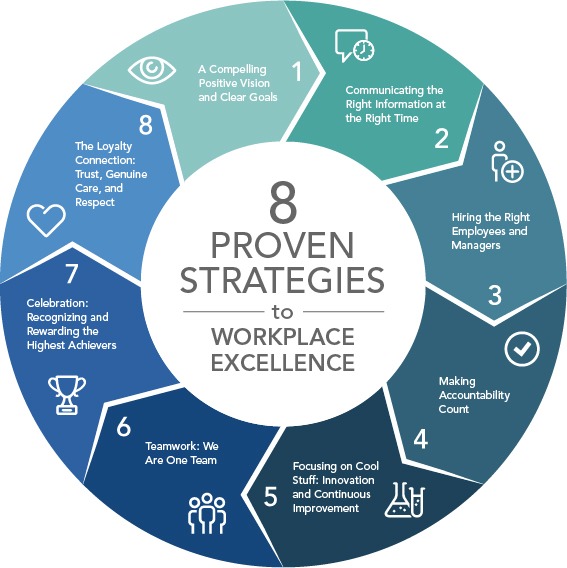Employee Engagement, Leadership, Productivity
How to Handle Boredom in the Workplace
If you’ve ever had a job where you were bored, then you know the chances of suddenly becoming fully engaged in your role are extremely low. While we’re all bored on occasion, it’s a mistake for leaders to ignore boredom and the significant impact it can have on employee engagement. Boredom lowers team morale, productivity, efficiency, and quality. It also increases stress and unhappiness.
For over twenty years, leaders and consultants have focused on increasing the percentage of fully engaged employees in their organizations. Despite the focus, money, and effort spent, research shows the percentage of engaged employees still hovers around 30 percent.
Engaged employees are connected at both the head and the heart and are willing to do whatever it takes to get the job done and continuously improve the condition of their team or organization.
Based on our research of the Best of the Best organizations, we know the key factors that increase engagement. We also know what factors decrease it.
Learn more about the 8 Proven Strategies to Workplace Excellence in our white paper, Beyond Engagement. Available for download here: http://ow.ly/ZOBtI
There’s still very little written about why it’s so difficult to engage the totally disengaged. After interviewing thousands of employees, one critical factor stands out as a huge roadblock.
The employees, or their manager, are bored!
How do you tell if you or one of your employees is bored? The following are some of the common warning signs:
- You’re distracted…your mind is somewhere else (surfing the internet while working or texting while driving)
- You’re not connected or thinking proactively (how to satisfy a customer, solve a problem or improve a process or product)
- Withdrawal…you prefer to work alone rather than meeting or working as a team
- Excessive complaining (focused on things you cannot control versus what you can control)
- Gossiping – not focused on the mission, vision or goals
- Late to work
- Absent from work
- Resort to excessive alcohol or drugs
- Don’t feel that anything you do is really important
It’s important to note that you can be really busy and still be bored. The problem with boredom is that mediocre employees are fine with doing mindless work. It’s your best employees who are the most likely to leave if they’re bored. Not even money will help retain a highly motivated, engaged employee who is bored.
So how do you tackle boredom in the workplace? If your goal is to build a productive and engaged team, the following 8 tips will help you tackle bored and disengaged employees.
Hire right. If the job requires a lot of customer or team interaction, and especially dealing with difficult customer situations, hiring someone who prefers to work independently with a well-defined process will never be a fit.
Hire someone who is mentally fit. Some employees are always thinking about how they can help others, do their job better and improve the team or organization. Other people prefer not to think; they’re mentally lazy. They want to come in, do what they’re told to do, and leave at the end of the day.
Hire someone who is already engaged. When you read a resume, you can easily identify an engaged employee. They have been proactive in getting involved, both in their previous organizations and their community, and have a history of improving their organizations. Even the questions an engaged employee asks are different from an employee who has a history of being disengaged.
Connect the employee and the job to the mission and vision. Employees need to know how they impact the overall mission and vision of the organization. When an employee understands that what they do directly determines whether a customer wants to do business with the organization, there’s a stronger connection to engagement.
Delegate well and hold team members accountable. Holding on to a task or project because you don’t trust an employee confirms to the employee that the work they do isn’t critical to the team’s success.
Involve team members in decision making. When team members are involved in making decisions and setting goals, there’s a higher chance they will be actively engaged and committed to a successful outcome.
Break the routine. Involve the employee on a new project or special task force in charge of solving a difficult problem. Breaking a routine, even one as simple as driving to work from a different direction, forces you to think and be more engaged.
Terminate. Although some people can be so bored they might as well be asleep and still do a great job, most bored employees exhibit the detrimental behaviors listed above. Delegate. If the employee isn’t accountable for producing the desired results, then coach, counsel, and train the employee. If that additional focus doesn’t engage the employee and motivate them to do great work, it’s time to get human resources involved. Adhere to their process and share the disengaged employee with your best competitor. Go back to the starting gate for this position, and begin your hiring process with point number one on this list.
Many factors can be at play in an organization where employee engagement is lacking. But, don’t underestimate the impact boredom can have on your team’s morale, productivity, efficiency, and quality. Do your part to build an innovative and engaged culture where talented employees are able to thrive and contribute to the success of your team and organization.












Leave a reply